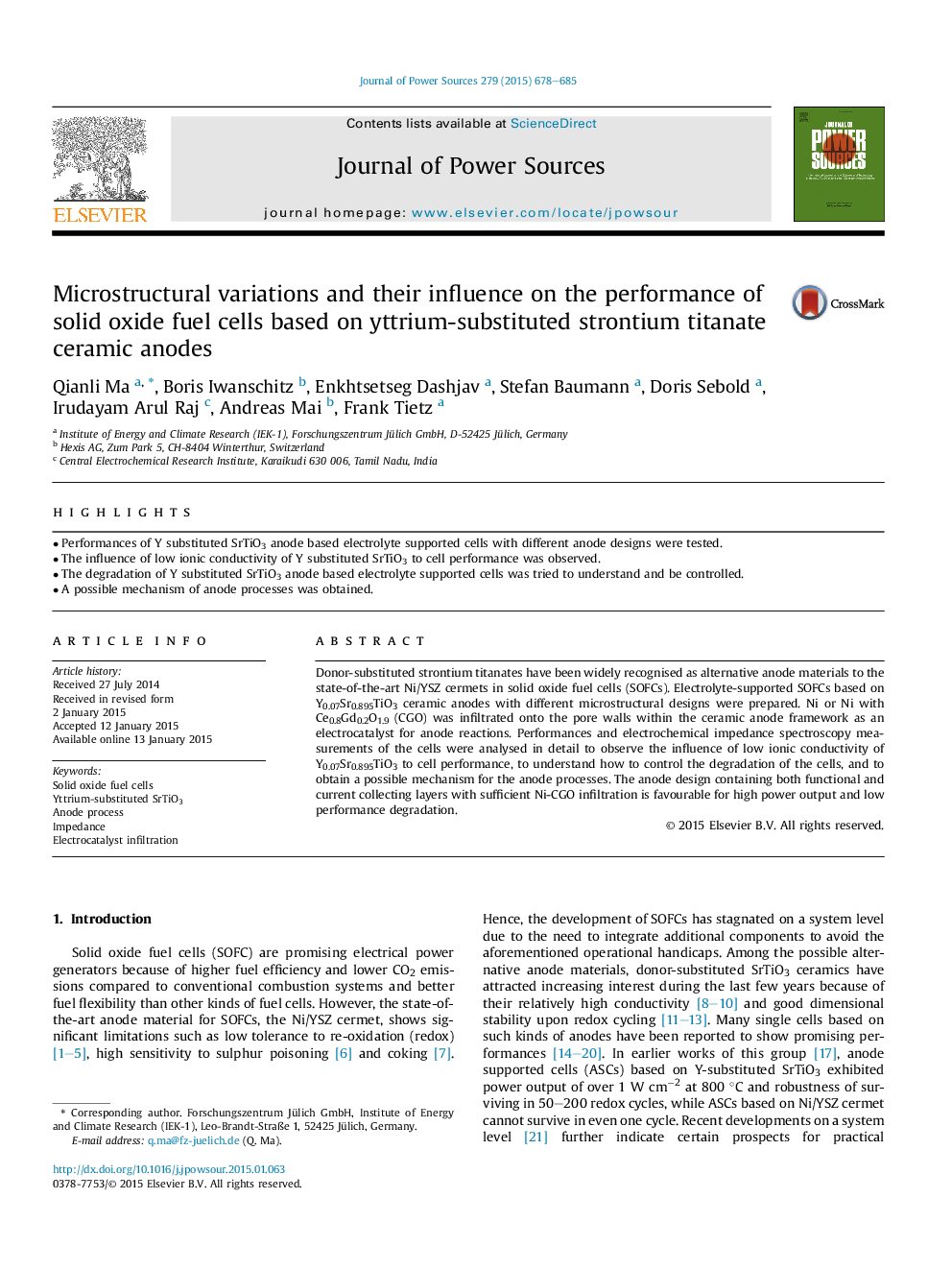| Article ID | Journal | Published Year | Pages | File Type |
|---|---|---|---|---|
| 7733399 | Journal of Power Sources | 2015 | 8 Pages |
Abstract
Donor-substituted strontium titanates have been widely recognised as alternative anode materials to the state-of-the-art Ni/YSZ cermets in solid oxide fuel cells (SOFCs). Electrolyte-supported SOFCs based on Y0.07Sr0.895TiO3 ceramic anodes with different microstructural designs were prepared. Ni or Ni with Ce0.8Gd0.2O1.9 (CGO) was infiltrated onto the pore walls within the ceramic anode framework as an electrocatalyst for anode reactions. Performances and electrochemical impedance spectroscopy measurements of the cells were analysed in detail to observe the influence of low ionic conductivity of Y0.07Sr0.895TiO3 to cell performance, to understand how to control the degradation of the cells, and to obtain a possible mechanism for the anode processes. The anode design containing both functional and current collecting layers with sufficient Ni-CGO infiltration is favourable for high power output and low performance degradation.
Keywords
Related Topics
Physical Sciences and Engineering
Chemistry
Electrochemistry
Authors
Qianli Ma, Boris Iwanschitz, Enkhtsetseg Dashjav, Stefan Baumann, Doris Sebold, Irudayam Arul Raj, Andreas Mai, Frank Tietz,
